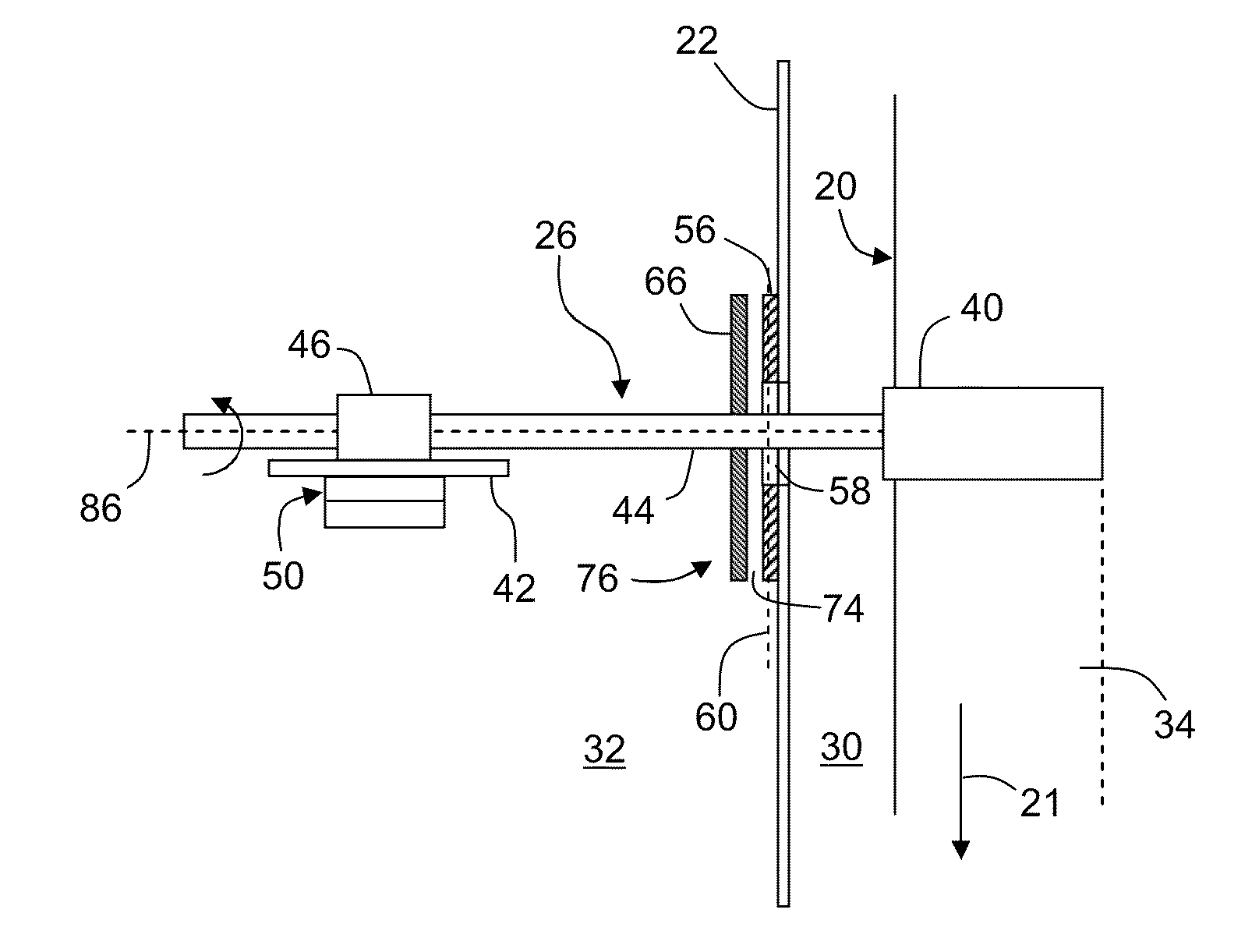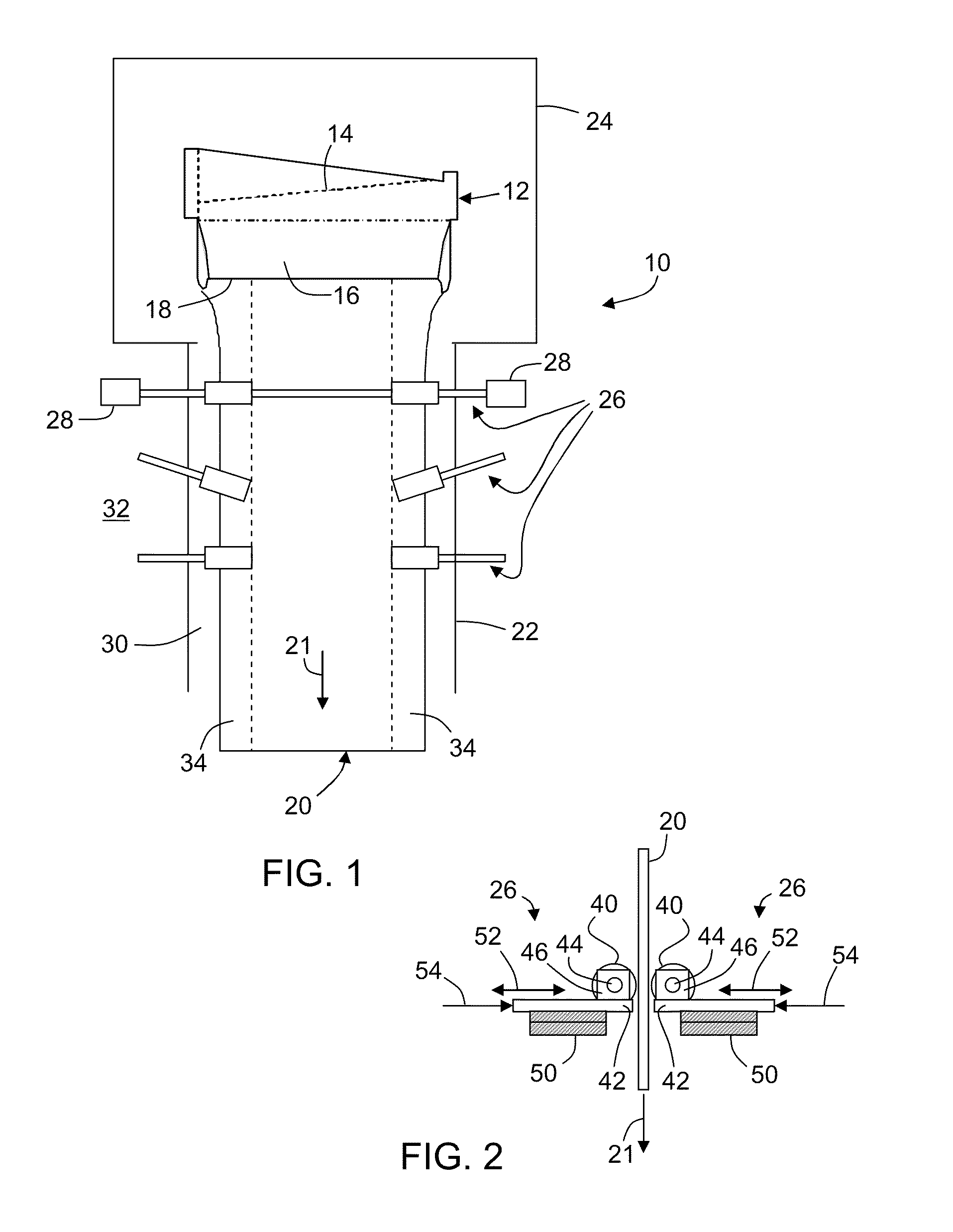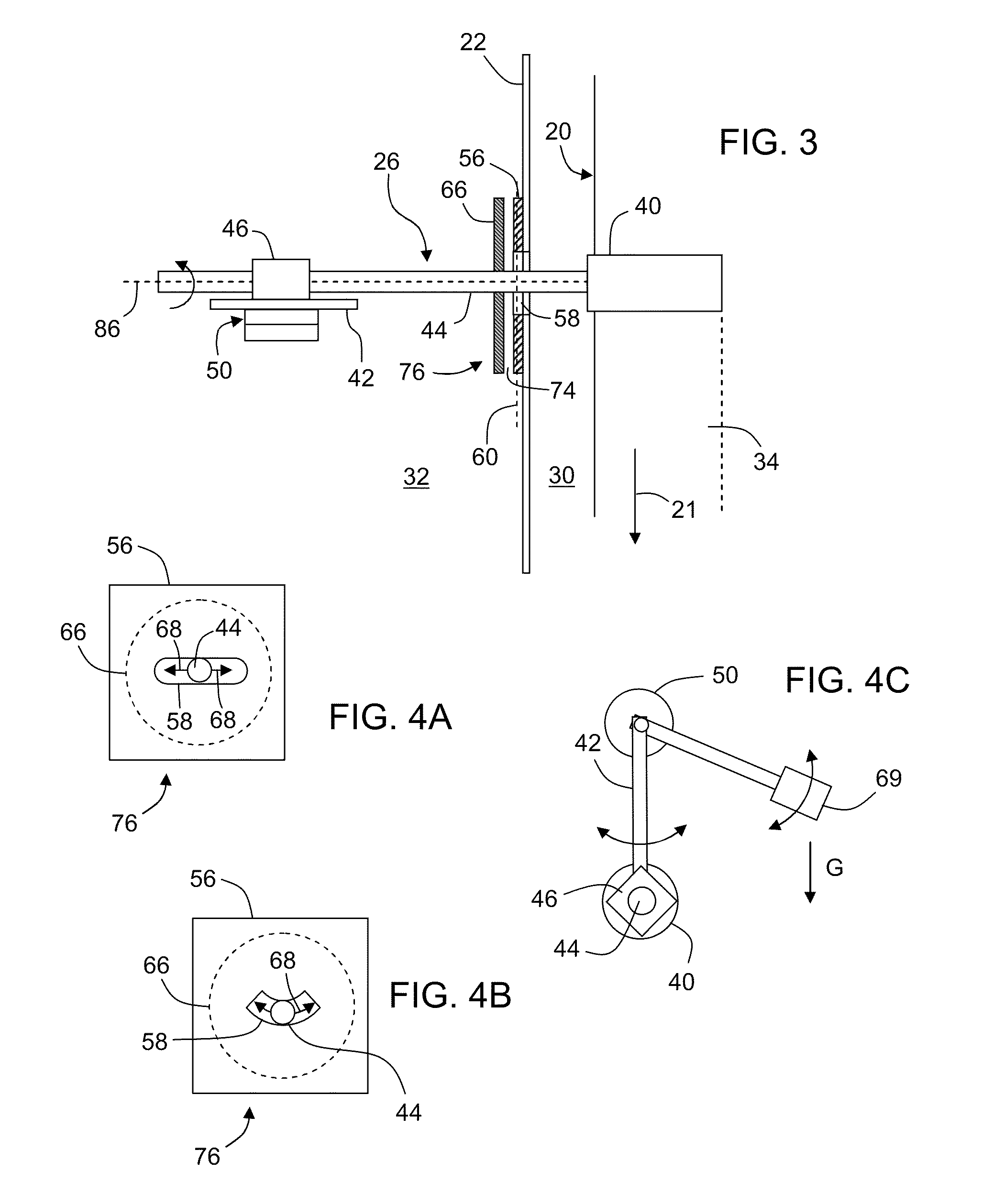Low friction edge roll to minimize force cycling
a technology of low friction and edge roll, which is applied in the direction of glass rolling apparatus, glass tempering apparatus, manufacturing tools, etc., can solve the problems of unoptimized cooling of the ribbon, undesirable stress and warpage in the final product, and force cycling, so as to reduce the cyclic force, and eliminate the effect of friction
- Summary
- Abstract
- Description
- Claims
- Application Information
AI Technical Summary
Benefits of technology
Problems solved by technology
Method used
Image
Examples
Embodiment Construction
ploded view of another embodiment of a seal assembly according to an embodiment of the present invention comprising three seal plates.
[0031]FIG. 7 is a cross sectional edge view of the seal assembly of FIG. 6 showing gas passages and gas flow.
[0032]FIG. 8 is a cross sectional edge view of a variation of the seal assembly of FIG. 7 using spacer members between several seal plates.
[0033]FIG. 9 is a top cross sectional view showing a pair of edge rolls engaged with an edge of a glass ribbon, further illustrating air bearings coupled with the edge roll shafts via support members and employing seal assemblies.
[0034]FIG. 10 is a cross sectional view of another embodiment of a seal assembly utilizing springs between several seal plates.
DETAILED DESCRIPTION
[0035]In the following detailed description, for purposes of explanation and not limitation, example embodiments disclosing specific details are set forth to provide a thorough understanding of the present invention. However, it will be a...
PUM
| Property | Measurement | Unit |
|---|---|---|
| temperatures | aaaaa | aaaaa |
| frictional coefficients | aaaaa | aaaaa |
| pressure | aaaaa | aaaaa |
Abstract
Description
Claims
Application Information
 Login to View More
Login to View More - R&D
- Intellectual Property
- Life Sciences
- Materials
- Tech Scout
- Unparalleled Data Quality
- Higher Quality Content
- 60% Fewer Hallucinations
Browse by: Latest US Patents, China's latest patents, Technical Efficacy Thesaurus, Application Domain, Technology Topic, Popular Technical Reports.
© 2025 PatSnap. All rights reserved.Legal|Privacy policy|Modern Slavery Act Transparency Statement|Sitemap|About US| Contact US: help@patsnap.com



